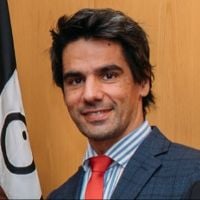Aquatic Experience in Physical Literacy: From Specific to Extensive Meanings of Aquatics for Life
A special issue of International Journal of Environmental Research and Public Health (ISSN 1660-4601). This special issue belongs to the section "Exercise and Health".
Deadline for manuscript submissions: closed (31 March 2023) | Viewed by 26706
Special Issue Editors
Interests: motor learning; motor control and biomechanics in swimming; sensory-perception and coordination; teaching methods and didactics in physical education and sport
Interests: swimming biomechanics; performance in water exercise; energetics of human locomotion in water; key determinants of aquatic sports activities; aquatic human locomotion; training and testing in aquatic activities
Special Issues, Collections and Topics in MDPI journals
Interests: exercise and health; artificial intelligence; machine learning; technology
Special Issues, Collections and Topics in MDPI journals
2. Comprehensive Health Research Centre (CHRC), University of Évora, 7000-727 Évora, Portugal
Interests: biomechanical and physiological determinant factors of sports performance, especially in swimming; teaching and training in aquatic sports.
Special Issue Information
Dear Colleagues,
Physical literacy embodies psychomotor, cognitive, motivational, and social aspects of the movement. Physically literate individuals better capitalize on the dynamic interactions of the aforementioned domains and can “read” the environment well, better dealing with the requirements of life. Physical literacy is therefore considered as a precondition to maintain appropriate levels of physical activity throughout life and to consequently contrast sedentary lifestyle, promote psychophysical wellbeing, and preserve health and quality of life.
In this holistic vision, the aquatic environment is a complementary condition allowing to experience specific and distinguishing movement proficiencies, differently from the usual terrestrial behaviors. It enriches the vocabulary of competencies and results in improving the ability to respond to embodied needs.
With this in mind, this Special Issue focuses on the multifactorial complexity of aquatic activity. A specific physical literacy in the aquatic environment has to be promoted to go beyond the recent literature on swimming and aquatics mostly addressed to biomechanics, medicine, and training.
Papers addressing didactics on fundamental aquatic skills, learn-to-swim, and aquatics in general are invited for this Special Issue. We welcome manuscripts specifically focusing on education, pedagogy, methodology, and conduction of aquatic experiences from infancy to old age towards the embodiment of psychomotor, cognitive, motivational, and social competencies for life by aquatics.
Dr. Raffaele Scurati
Dr. Matteo Cortesi
Dr. Pedro Morouço
Dr. Nuno Batalha
Guest Editors
Manuscript Submission Information
Manuscripts should be submitted online at www.mdpi.com by registering and logging in to this website. Once you are registered, click here to go to the submission form. Manuscripts can be submitted until the deadline. All submissions that pass pre-check are peer-reviewed. Accepted papers will be published continuously in the journal (as soon as accepted) and will be listed together on the special issue website. Research articles, review articles as well as short communications are invited. For planned papers, a title and short abstract (about 100 words) can be sent to the Editorial Office for announcement on this website.
Submitted manuscripts should not have been published previously, nor be under consideration for publication elsewhere (except conference proceedings papers). All manuscripts are thoroughly refereed through a single-blind peer-review process. A guide for authors and other relevant information for submission of manuscripts is available on the Instructions for Authors page. International Journal of Environmental Research and Public Health is an international peer-reviewed open access monthly journal published by MDPI.
Please visit the Instructions for Authors page before submitting a manuscript. The Article Processing Charge (APC) for publication in this open access journal is 2500 CHF (Swiss Francs). Submitted papers should be well formatted and use good English. Authors may use MDPI's English editing service prior to publication or during author revisions.
Keywords
- physical literacy
- swimming
- aquatic skills
- water exercise
- motor learning
- physical education
- teaching methods
- embodiment
- physical activity
- quality of life








